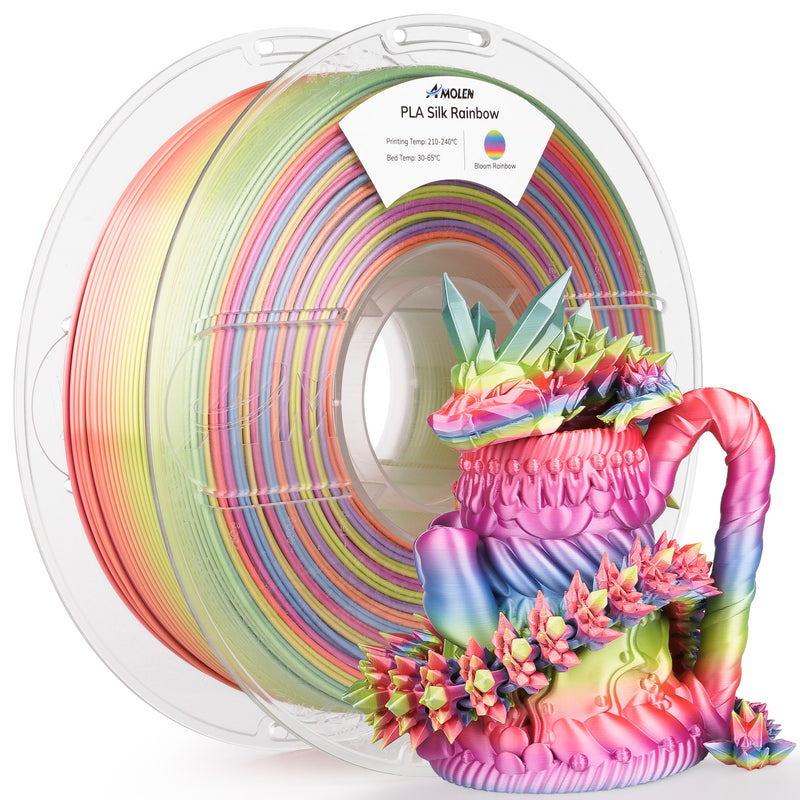Unlock the Secret to Perfect 3D Prints: The Ultimate Guide to Choosing the Best Silk PLA Filament!
In the vibrant world of 3D printing, silk PLA filament has emerged as a favorite among enthusiasts and professionals alike. Known for its unique shimmering finish, silk PLA not only enhances the aesthetic appeal of printed objects but also opens up new possibilities for creativity and design. As more users dive into the realm of 3D printing, the importance of selecting the right filament cannot be overstated. The quality of your prints is often a direct reflection of the filament you choose. With a plethora of options available, making an informed decision is key to achieving high-quality results. In this guide, we will explore the ins and outs of silk PLA filament, helping you navigate your choices and elevate your 3D printing game.

Understanding Silk PLA Filament
Silk PLA filament is a specialized type of polylactic acid (PLA) that incorporates additives to create a glossy finish reminiscent of silk fabric. This unique filament stands out from traditional PLA due to its enhanced luster and smooth surface, making it ideal for projects where aesthetics are paramount. The sheen of silk PLA can dramatically impact the visual quality of your prints, capturing light beautifully and adding depth to colors. Unlike standard PLA, which typically has a matte finish, silk PLA provides a vibrant, reflective surface that enhances color saturation. Users often find that prints produced with silk PLA have a high-end look, making it a popular choice for decorative items, prototypes, and artistic creations. However, it’s essential to understand that the properties of silk PLA may require slight adjustments in printing settings compared to standard PLA.
Key Factors to Consider When Choosing Silk PLA Filament
When selecting silk PLA filament, there are several key factors to consider that can significantly influence your printing experience and outcomes. First and foremost is the variety of colors available. Silk PLA comes in a wide range of hues, from vibrant reds to soft pastels, allowing for endless creative possibilities. Additionally, consistency in diameter is crucial; variations can lead to uneven extrusion and subpar print quality. As a general rule, aim for filaments that list a tolerance of +/- 0.05mm for optimal performance. Lastly, printability is vital—some silk PLA filaments are easier to work with than others. Look for user reviews and experiences, as these insights can guide you in finding a filament that not only meets your aesthetic desires but also offers reliability during the printing process.
Color and Finish
The color options available in silk PLA filament can dramatically affect the final appearance of your prints. Different colors can evoke various emotions and aesthetics, making it essential to choose a hue that aligns with your project vision. For instance, a bright gold silk PLA can add a touch of elegance to decorative pieces, while a deep blue can provide a modern, sleek look. Moreover, the finish of the filament can influence how light interacts with the print, enhancing or muting certain colors. It’s worth experimenting with different shades and finishes to see how they transform your designs.
Printing Temperature and Settings
Achieving the best results with silk PLA filament often requires specific printing temperatures and settings. Generally, silk PLA prints best at temperatures ranging from 190°C to 220°C. It’s advisable to start at the lower end of this range and gradually increase the temperature if you encounter issues like poor layer adhesion. Additionally, a slower printing speed can enhance the appearance of the sheen, allowing for a smoother finish. Utilizing a heated bed can also help with adhesion and reduce the risk of warping, especially on larger prints. As every printer is different, it may take some trial and error to find the perfect settings for your specific setup.
Comparing Different Silk PLA Filaments
With the growing popularity of silk PLA, a variety of options are available in the market, making it essential to compare different brands and types. Start by gathering user reviews and testimonials, as these can provide valuable insights into print quality and reliability. Consider creating a checklist that includes factors such as color, diameter consistency, and ease of use. This can help streamline your decision-making process. Some friends of mine who are avid 3D printing enthusiasts often share their experiences in online forums. They recommend checking for community feedback before making a purchase, which can save you time and frustration down the line.
Common Issues and Troubleshooting Tips
While silk PLA filament is known for its aesthetic appeal, users may encounter common challenges when using it. One frequent issue is stringing, which can occur due to improper temperature settings or retraction settings. To combat this, consider fine-tuning your retraction distance and speed. Additionally, if you experience layer delamination, increasing the printing temperature can often help improve layer adhesion. If prints are not adhering to the bed, ensure your bed is clean and level, and try using a heated bed if possible. By being aware of these common issues and having troubleshooting tips at your disposal, you can enhance your printing experience with silk PLA filament.
Summary of Key Insights
Choosing the best silk PLA filament for your 3D printing projects can significantly influence the quality and aesthetics of your prints. By understanding the unique properties of silk PLA, considering key factors like color variety and printability, and being prepared to troubleshoot common issues, you can make an informed decision that enhances your 3D printing experience. Remember to leverage user experiences and community feedback as you explore your options. With the right filament in hand, you’re well on your way to unlocking the full potential of your 3D printing journey.








